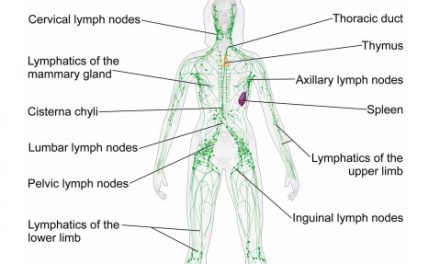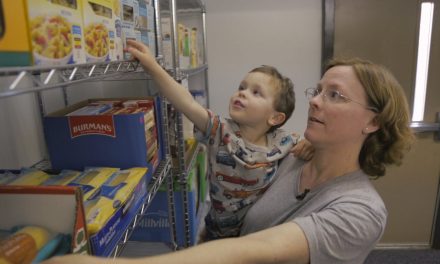In an unprecedented achievement, researchers from Harvard and Japan have managed to synthesize a powerful anticancer compound derived from sea sponges. Scientists have been trying to accomplish this for more than 30 years, and this new strategy has already helped hasten research into these molecules, including a clinical trial planned in humans. Sea sponges play a vital role in the oceanic ecosystem, filtering water and providing housing for organisms to hide in or lay their eggs on.
Halichondrins are a large naturally occurring polyether macrolide originally isolated from the marine sea sponge Halichondria okadai, and were discovered in minuscule quantities by Japanese researchers in the mid-1980’s. Their ability to aggressively fight tumors became quicky apparent. No other treatment reacted like halichondrins.
RELATED STORY:
Unfortunately, halichondrins from sea sponges were only available in very small quantities, and they were too complex to be reproduced in a lab because the molecule has 31 chiral centers that result in approximately 4 billion ways in which the synthesis can go wrong. A chiral center is fascinating because it is characterized by an atom that has four different groups bonded to it in such a way that it has a non-superimposable mirror image. As you might imagine, this molecule is extremely intricate.
For decades, though, halichondrins were also a limited resource. They couldn’t be grown from sponges in any significant amount, and their sheer complexity made synthesizing them in a lab almost impossible. In the early 1990s, scientists were able to artificially make one of these molecules, called halichondrin B, but without not requiring more than 100 different steps. And as with the naturally made version, they could only produce a tiny amount at a time—roughly 1 percent of the total quantity of ingredients used to make it.
The discovery eventually led to the creation of a simpler compound based on halichondrin B, developed by the Japanese pharmaceutical company Eisai, that became an FDA-approved drug to treat advanced breast cancer (and later liposarcoma) in 2010.1
RELATED STORY
- Cancer as a metabolic disease
The scientists responsible for this new study say their approach has now gotten to the point where they can finally, after many attempts, make an adequate supply of these molecules. Their work is detailed in Scientific Reports and focuses on one specific halichondrin drug candidate, named E7130.
In the paper, they describe being able to produce just over 11 grams worth of E7130 at once, with more than 99 percent purity (meaning there’s little else beside the active ingredient). That might not seem like much, but it was more than enough to start larger animal trials of E7130 in mice. The same technique, they added, has since been licensed to Eisai to use in their ongoing Phase 1 clinical trial to evaluate whether E7130 is safe in humans.
“In 1992, it was unthinkable to synthesize a gram-quantity of a halichondrin, but three years ago we proposed it to Eisai,” senior author Yoshito Kishi, a Morris Loeb Professor of Chemistry at Harvard who also helped lead the research into halichondrin B, said in a release from the university. “Organic synthesis has advanced to that level, even with molecular complexity that was untouchable several years ago. We are very delighted to see our basic chemistry discoveries have now made it possible to synthesize this compound at large scale.”.1
Kishi, who is known for his contributions to the sciences of organic synthesis and total synthesis, reported that he and his team uncovered that these molecules are capable of working along with current drugs to better the chances of chemotherapy, instead of just lessening the side effects. In the E7130 mice studies, they discovered that halichondrins don’t only attack a tumor cell’s microtubules, but they may also help some cells and restrict others to prevent a tumor from thriving.
RELATED STORY:
For the time being they will focus on testing E7130 as a treatment for rare forms of cancer, but they do plan do to a second clinical trial in the United States.
Research surrounding halichondrins has been going on for decades, and still has a way to go. Cancer drug development is a long and arduous process, going from an idea in a lab to clinical trials to finally something prescribed by a doctor. During this process (which often takes years and significant resources), researchers make sure the drug is safe for people to take and effectively treats cancer. But the actual amount of time and money needed depends on the drug.
It is important to note that even with the abundance of medical promise offered by sea sponges (the first anti-leukaemia drug was developed from two chemicals found in a sea sponge), warming ocean temperatures have caused mass deaths of sponges in the Mediterranean and Caribbean over the last ten years. If these sponges die out, their medical potential will be lost forever. Many other factors, like pollution and plastics in the ocean could have major consequences for sponges, and the underwater ecosystems in general.
And to take it a step further, as long as we have toxic poisons (like glyphosate) being sprayed on our food supply and making its way into our bodies, and we aren’t looking at the big picture regarding how to keep our bodies healthy (like our diet and fasting) we aren’t fully addressing the root cause of many of the illnesses that plague us.












